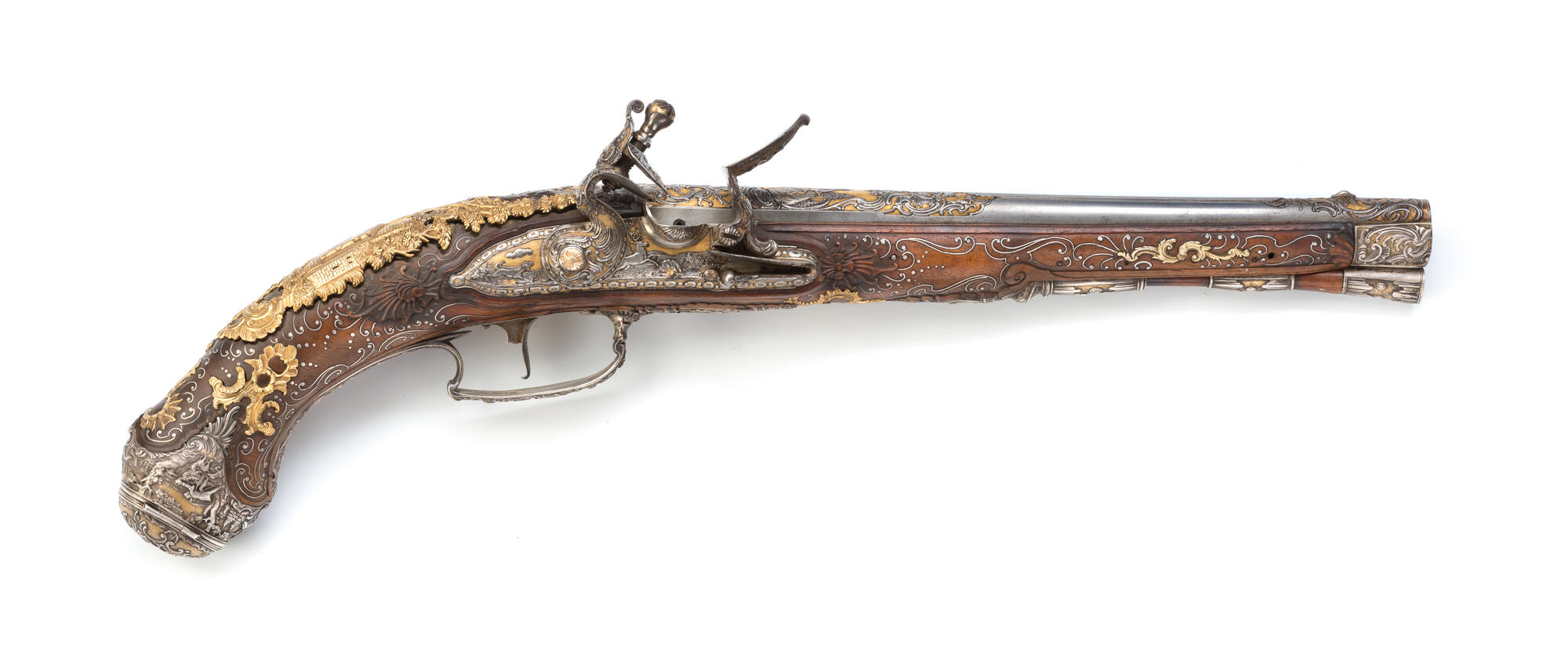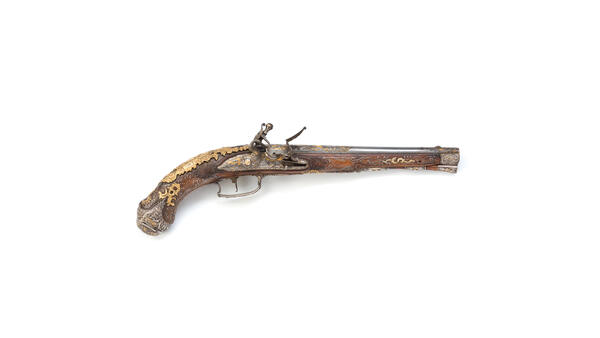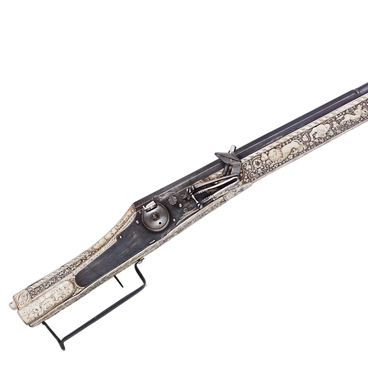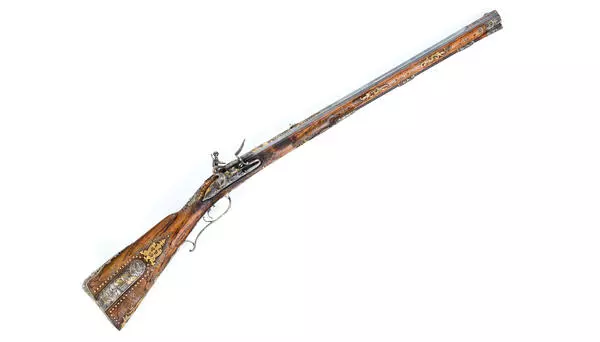The flintlock pistol from the collection of hunting weapons in the Gatchina Palace and Estate Museum was made in the 1740s by the gunsmith Johann Christoph Stockmar. He came from a family famous for several generations of gunmakers and lived in Heidersbach, which then was a suburb and now is a district of Suhl in Thuringia. He learned the craft from his father, Johann Nikolaus Stockmar, with whom he worked side by side. When his father retired, Johann Christoph inherited his business and even occupied the position of engraver at the court of the Elector of Saxony. However, it should be mentioned that there are no signatures or marks of the gunsmith on the pistol. But it was definitely made by Johann Christoph Stockmar, because there is a number of well-known pistols and rifles made in the same style and signed by him. Today they can be seen in the Dresden Armoury and in the Wallace Collection in London. Before being transferred to Gatchina in the second half of the 18th century, many guns and pistols were kept in other European armouries. It is obvious from inventory numbers which were cut or stamped on a trigger guard — a part which covered the trigger preventing its accidental release. This pistol also has such a number: #208. But since the pistol is richly decorated, the only suitable place for the number was on the inner side of the trigger guard devoid of any decoration. In order to put the number there it was necessary to partially disassemble the pistol. Unfortunately, it has not yet been established to which collection the pistol originally belonged. The barrel of the flintlock pistol is made of forged iron. It is round with two flat planes on the sides near the breech and a curved plane along the top of the barrel. There is no rear sight. The front sight is made of silver. The barrel is decorated in the chasing technique. At the breech end there is an image of a huntress with a rifle and a dog while the tang of the breech plug and the barrel surface near the breech face and around the front sight are covered with rocaille patterns. All the parts of the silver furniture are also decorated in the chasing technique. The butt cap has several images with hunting scenes: a hunter with dogs on one side, a hunter by a killed deer on the other side and two dogs in the centre (on the lid). The trigger guard is decorated with an image of a walking hunter with dogs as well as with rocaille curls. The bridle of the lock has an image of a hunter with a dog and ramrod pipes are decorated with rocaille motifs.
№9 Flintlock Pistol
Время создания
1740s
Место создания
Suhl, Thuringia, Germany
Размер
overall length — 42.2 cm; barrel length — 25.7 cm; calibre — 14 mm
Техника
forging, wood carving, casting, repoussé, gilding, inlay
Коллекция
1
Открыть в приложении#1
Johann Christoph Stockmar
№9 Flintlock Pistol
#2
#3
Ministry of Culture of the Russian Federation
читать дальшескрыть
00:00
00:00
1x
№9 Flintlock Pistol
Время создания
1740s
Место создания
Suhl, Thuringia, Germany
Размер
overall length — 42.2 cm; barrel length — 25.7 cm; calibre — 14 mm
Техника
forging, wood carving, casting, repoussé, gilding, inlay
Коллекция
1
Открыть в приложении
Поделиться




